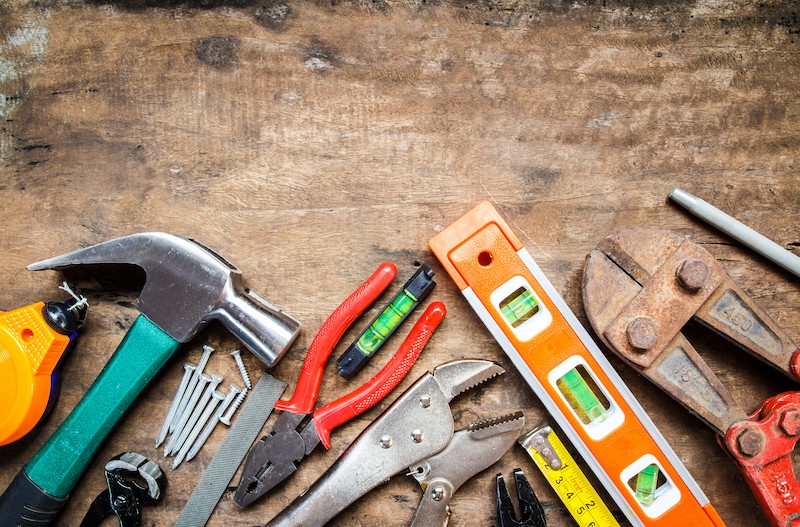Latest Posts
Tips To Keep Your Tools In Top Condition

Whether you’re a home gardener, a hobby carpenter or a professional tradie, your tools are the make or break of your labour. Just as a good-quality tool can make your work easier, so too can poorly maintained equipment make your task harder and end up costing you money for replacements.
Many of our tools can last a long time if we treat them right, so have a read of our latest blog to keep your tools in good working order for longer.
POWER TOOLS
Electrical equipment needs the most maintenance and has the most potential for breakage. With multiple moving parts, fragile components and electricity involved, we need to look after them the most.
Non-electrical moving parts, such as drill chucks and chainsaw blades, should be regularly checked for build-up of grease and grime. This can be removed with a detergent solution – applied sparingly and carefully to avoid electrical parts. Then a lubricating oil can be applied.
Motors should only be worked on by trained professionals, but you can use a cloth and toothbrush or compressed air duster to clean all casing and vents. This also applies to buttons, levers and other moving electrical parts.
GARDEN TOOLS
Being in the dirt all the time, garden tools are more prone to rusting. You can buy commercial cleaning solutions, but a 1:1 solution of water and white vinegar, some strong, cold black tea or cola are almost as efficient. Soak your tools overnight, then get scrubbing with some steel wool. This soak-and-scrub method can be repeated and should get rid of most rust, but deeper, harder rust may need to be attacked with a wire brush.
Once you’ve removed as much rust as possible, spray all metal surfaces with WD-40 to help protect blades and tines from future rusting. Wipe down tools regularly and re-apply WD-40 a few times a year, depending on level of use.
WOODWORKING TOOLS
Keeping an edge on your woodworking tools not only makes your life and job easier, it also protects your tools. Blunt blades require more force, making them more likely to get damaged.
There are various ways you can sharpen, but you can’t beat a good-quality whetstone. A little bit of elbow grease every couple of months will save you a lot more elbow grease from using blunt tools!
Timber handles can need some maintenance too. A small amount of linseed oil keeps non-varnished handles healthy. Take the time to check over your tool handles for any nicks or chips. Sand any rough areas down, ending with a fine-grade sand paper and a quick, thin coat of linseed oil for a smooth finish to avoid splinters and blisters. Wipe all excess oil off with a clean cloth.
This applies all wooden-handled tools.
HAND TOOLS
Most hand tools work just as well with a bit of rust on them, but they can last a lifetime if you take care of them from Day One. For hammers, screwdrivers, spanners and tools without moving parts, follow the rust removal steps above once or twice a year for longer-lasting tools.
For shifters, socket sets, pliers and similar items, you can also de-rust in the same way, but avoid WD-40 as this can lead to a build-up of grime. Instead, pick up a good-quality silicone spray. This will coat, protect and lubricate your tools for smooth action, easy use and longer life.
HAND SAWS
Remove rust and oil handles whenever needed, as before, but take a few extra steps to keep your hand saws running smoothly.
After each use, use a toothbrush to remove sawdust from blade teeth, then spray down with a light coat of WD-40 before storing.
After every few uses, check your blade teeth are aligned. Ease any bent teeth back into place with pliers.
Sharpening blades can be a bit tricky and time-consuming, but it’s worth doing to protect your saw and keep it working its best. Use a finer-grade metal file to give each tooth a quick sharpen, using the same number of strokes on each tooth. Take time to make sure teeth are the same length and that you keep as close to the original shapes and angles as possible.
It sounds like a lot of work, but keeping on top of your tool maintenance will save you a heap of time and money in the long run.
